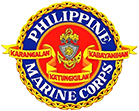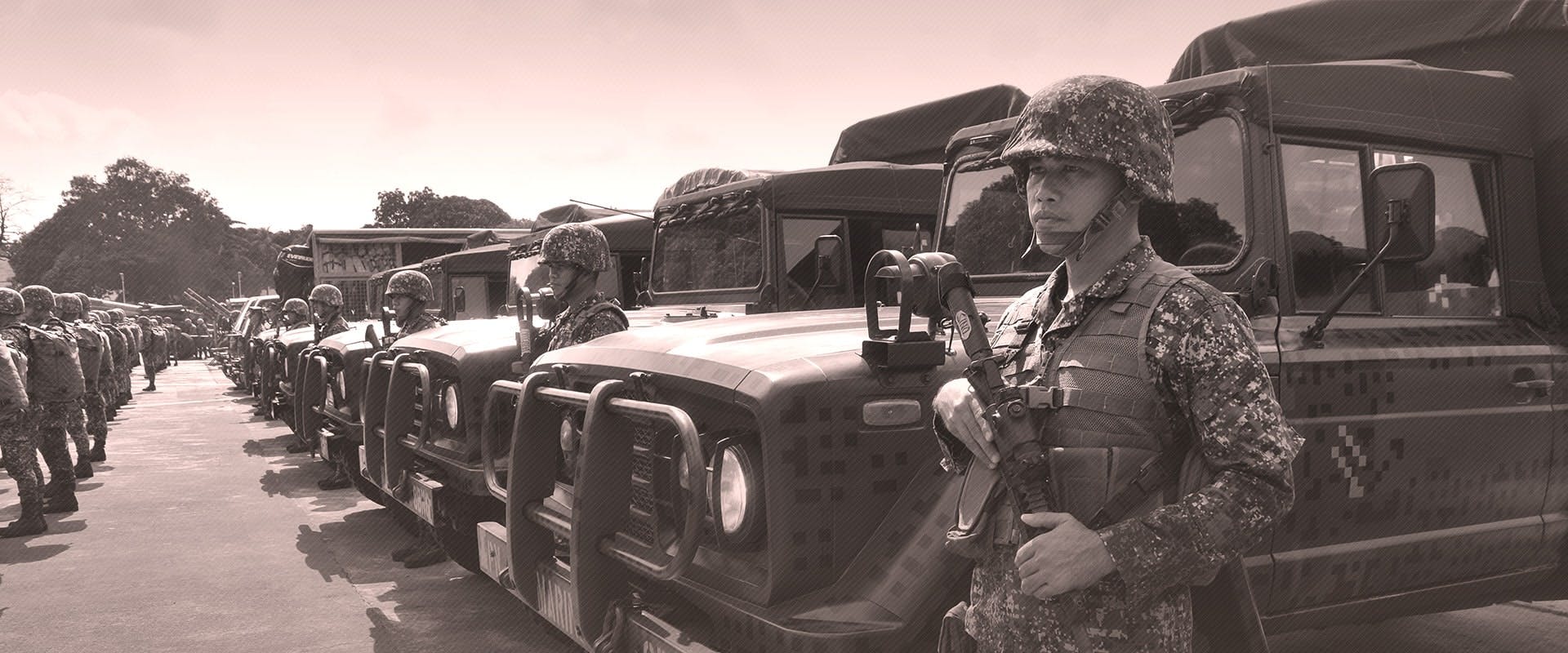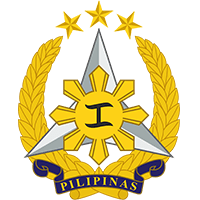
It has been five long years since the end of the siege. While the government has taken measures to expedite the reconstruction of the war-torn city, the people and its frontlines have etched in their hearts the sacrifices they endowed in liberating Marawi.
That fateful day occurred on May 23, 2017, where the initial invasion of the Muslim enclave transpired after Philippine government forces attempted to capture Isnilon Hapilon, a wanted leader of the Abu Sayyaf group and the self-proclaimed emir of ISIS forces in the Philippines.
One of the principal adversaries in the siege was the Maute family, a prominent Maranao clan whose roots can be found in the town of Butig and the city of Marawi. Founded by Abdullah Romato Maute in 2012, the Maute Group consists of Philippine insurgents in the province of Lanao del Sur. This group has pledged allegiance to ISIS and Hapilon two years prior, assisting them to establish a caliphate in Southeast Asia.
The attempt to capture one of the Philippines' most wanted terrorists turned out to be the beginning of the country's largest urban war between state forces and violent extremists in the sole declared Islamic City. Acknowledging the gravity of the threat, President Rodrigo Duterte imposed martial law throughout the whole island of Mindanao.
The Marines heeding the call of duty, sent one marine brigade with three marine battalions and a Marine Special Operations Group supported by armored tanks, field artillery, and service support units. Task Force Tiger, led by Brigadier General Custodio Parcon Jr. and later by Brigadier General Melquiades Ordiales Jr., with three marine battalion landing teams consisting of MBLT-5, MBLT-7, and MBLT-10 were deployed to retake Marawi city.
During that time, the unit's mission is to conduct Internal Peace and Security Operations (IPSO) and combat clearing operations to destroy the Maute-ISIS Group and restore the stability of their respective area of operations.
Staff Sergeant Rommel Garcia recounts what he learned from the Philippines' most extensive military encounters since World War II.
Rommel Garcia, aged 36 at that time and then Sergeant, was part of the Special Operation Platoon (SOP7) of MBLT-7, he was tasked as a sniper to combat militants linked to the Islamic State in the city.
The MBLT-7, known as the 'Striking Battalion,' established its legacy in the province of Lanao del Sur, with the city of Marawi serving as its operational area. After six months of retraining and refreshments at the Marine Barracks, Garcia and his team, comprising around 300 soldiers, were stationed at a detachment on June 1. The unit only brought light packs containing military gear, firearms, ammunition, and personal belongings as they prepared for combat.
"Pumasok kasi kami n'on start na talaga [ng siege]... pumunta kami n'ung nandoon na mismo sa Marawi ang mga PNP, then Army." Garcia explained, "Di yata kinaya ‘yung mga na-aboard doon kaya pinadala na lahat ng mga tropa saatin dito, kumbaga, pinagtulong-tulungan na."
(The siege had already begun when we arrived on the battlefield. Our troops went to Marawi when the PNP and the Army were already deployed. The government forces on board were unable to handle the situation. Therefore our troops were dispatched to assist.)
Unbeknownst to these warriors, this perilous crisis would drag on for months. Nevertheless, Sgt. Rommel Garcia and his team were determined to accomplish their duty to protect the motherland.
Militant Tactics
By the first quarter of 2017, the Maute Group recruited 304 members and collected 109 weapons. Intelligence sources indicated that the Maute Group had been stockpiling firearms, ammo, and explosives in numerous areas of Marawi.
The terrorists selected the city of Marawi for strategic purposes. First is that it is one of the poorest provinces in the country, and lawlessness was the norm in the city, which had long observed a tradition of Muslim exclusivity and aversion to outside influence.
According to an analysis by the International Crisis Group, the militants planned to seize on the rooted Muslim grievances in Mindanao, where implementation of the peace agreement to establish a new self-governing region known as Bangsamoro Basic Law has been observably stagnating.
The clash has caused the destruction of numerous structures in the area, displacement of residents, casualties of multiple soldiers, and the cessation of economic activities in the Islamic city. Besides capturing hostages in Marawi, the Maute-ISIS group adopted more complex tactics, techniques, and practices that Marine troops have never encountered before.
The terrorists equipped themselves with powerful sniper rifles and optics to slow down the advance of the Army. They buried a massive amount of improvised explosive devices (IED) within buildings and along potential routes used by government forces. These extremists also utilized gasoline and diesel fuel as Molotov to torch armored tanks, vehicles, and houses to lure the Marines from their concealed positions into an open area where their snipers could target them.
Using commercial drones, they conducted surveillance on the troop disposition. They wore protective equipment, including night-vision goggles and signal jammers for cell phones and radios. They dug underground holes and even employed floating devices to swim across Lake Lanao, the second-largest freshwater lake. This is how the enemy gained their advantage not only in utilizing modern technology but also through their effectiveness in urban warfare.
The urban settings on the battlefield constrained the actions of all pursuing security forces. The only way to get to each line of departure is to cross the iconic Mapandi Bridge—one of 3 key bridges crossing the Agus River going east to the main battle area—which is heavily guarded by enemy fighters and snipers.
The Mapandi Bridge, or what the troops later referred to as "Fate's Crossing," is the only viable main supply route (MSR) within the area of operations. Clearing the said bridge is crucial as it would substantially expedite the transport of logistical supplies.
However, the Mapandi bridge is incredibly narrow, limiting the mobility of approaching armored vehicles. Not only does this inhibit the troops from attacking enemy positions and evacuating the displaced Marines, but it also hinders the capacity of the unit to fire on the enemies from the field.
Dedicated Troops and Countermeasures
While the Marines advanced in the vicinity of Mapandi bridge, the militants established their stronghold along the First Road Junction, which was an advantageous location in the area. Garcia recalls how his battalion got stationed inside the PhilHealth building across Mapandi bridge, where he and his spotter assessed the enemy's proximity to pin down their location.
Team MBLT-7 crossed the bridge on their first attempt and secured a foothold on June 4. Despite this, Sgt. Rommel Garcia estimated that their opponents were roughly their size. They opted to retreat after realizing they lacked preparations and intense enemy fire, in contrast to the militants in a position of considerable advantage.
Fortunately, the MBLT-7, led by 1st Lieutenant John Frederick Savellano, recovered cash amounting to 52 million pesos and 29 million pesos worth of checks the following day. The three-story concrete house used as a sniper-and-machine-gun nest by the enemy yielded not only money but also 29 hostages held by the Maute-ISIS Group, 29 high-powered firearms, assorted ammunition, and explosives.
On June 6-7, the forces attempted another approach to retake Mapandi Bridge and its adjoining areas of Lilod Madaya.
Garcia recalled how his unit took measures to outsmart the militants. "‘Yung second attempt, nagpahinga muna kami. Pinagplanuhan nanaman namin kung anong strategy ang gagawin sa mga kalaban."
(Before making a second attempt, We rested and meticulously plotted our next strategy to defeat the enemies.)
"Ang natatandaan ko, n'ung napasok na namin ‘yung lugar na ‘yun, ni-counter na rin namin sila, kung ano ‘yung ginagawa nila saamin noon, binalik rin namin sakanila."(I remembered that when we invaded the area, we tried counter attacking the enemies by inflicting the same damages they had done to us.)
The battalion countered intense enemy fires to secure a foothold in the Mapandi bridge. The Marines decided to increase the number of troops to cross the bridge. During this operation, which started on June 9 and lasted the whole day, the "Fatal Day" turned up in the history of Marines.
Due to the limited avenue of approach, compromised movements, exposure to enemy snipers and anti-tank weapons, lack of experience in urban terrain, and strong enemy position, the Joint Task Group (JTG) "Tiger" lost thirteen valiant souls and fifty wounded marines. One of them was 1LT Savello, the commander who conquered a Maute-occupied building and recovered a large sum of cash and checks.
Despite suffering several fatalities, the battalion's determination remained palpable to complete their objective and liberate Marawi. They believed that the bravery and sacrifices of their comrades should never be in vain.
"‘Yung kagitingan o katapangan ng mga Marines. Nandoon lagi ‘yun ‘pag sa labanan, hindi [kami] marunong umatras. ‘The few, the proud', Isa sa pinanghahawakan namin." Garcia said.
(The gallantry and courage of Marines are prevalent on every battlefield, we never know how to waver. We held firmly to this statement: 'The few, the proud')
Turning Point
The successful liberation of Mapandi Bridge on July 29, 2017, proved to be the turning point in the Marawi battle. Garcia noted that through collaborative efforts from JTG "Tiger," they overcame countless trials and tribulations. "Napakalaking tulong din ‘yung mga armored vehicle, kasi bago din sila maka-proceed, kami muna ‘yung nagc-clear lahat nung area na possible na ‘okay na, pwede niyo nang pasukin'"
(Our armored vehicles were greatly helpful [in liberating the bridge]. Before our forces advanced, we [snipers] first cleared all the feasible spots to indicate that "It is now safe to enter.")
The control of the Mapandi Bridge facilitated the movement of additional forces and logistics, as well as expedited the evacuation of combat casualties. The Marines stationed at the PhilHealth building could monitor, receive, and screen escaped hostages. The debriefing of the hostages provided detailed and valuable intelligence.
The enemy hid in clusters of buildings and mosques. This is due to the more robust surveillance and defensive position of the Maute-ISIS militants. Primarily through the government's repeated announcement in the media that no mosque will be exposed to air raids, bombs, or attacks.
By the third week of August to the third week of September 2017, engagements with the Maute-ISIS group intensified as clearing operations were conducted in Barangays Banggolo and Raya Madaya Mosque, the commercial center of Marawi City where the enemy initially stockpiled their supplies.
The barrier to all access to the city's entry and exit points has denied all possible enemy reinforcements and re-supply of food. By this time, the enemy is on their final line of defense and retreating towards their alleged Command and Control, located at the Bato Mosque.
"Nakipagsabayan nalang din sila. No choice na sila, pinagtulong-tulungan narin ng lahat ng MBLTs. Kumbaga, halos magkakadikit na kami. Eto na ang pinakahuling, "edi sabayan nalang", sabi siguro nila sa isip nila." Garcia said.
(They engage us in combat because they have no other option. All Marine Battalion cooperated, and the battle was likely tied. I guess the enemies thought to themselves, "All right, let's fight.")
A series of encounters occurred during this period, resulting in casualties, mainly from the MBLT-7. After five long months since the initial invasion, Marawi City was finally liberated from the hands of the Maute-ISIS group when the military forces neutralized Isnilon Hapilon and Omar Maute on October 16, 2017.
The AFP has freed the last building held by ISIS in Marawi on October 23, 2017. Defense Secretary Delfin Lorenzana declared the conclusion of combat operations in the city. Through their decisive recapture of the three bridges that became a key route for other forces to transport rescued civilians and wounded soldiers, the Marines brought pride and honor as liberators of Marawi City.
"Sa madugong karanasan, naging matatag pa rin ang bawat isa. Though, hindi din masasabi na magiging success tayo kung hindi nagtutulungan, ‘yun nga, ‘yung camaraderie sa Marines." Garcia said.
(Despite brutal encounters, each of the forces remained steadfast. Though, we couldn't achieve victory if we didn't have each other's backs. That's the Marine way; we call it the spirit of "camaraderie.")
With these achievements, the MBLT-7 earned distinct credit and upheld the highest standard not only for the Philippine Marine Corps and the Philippine Navy but for the Armed Forces of the Philippines in general.
However, the cost to the people of Marawi was enormous and will be felt for some time to come. The conflict claimed the lives of at least 165 AFP and PNP members and 87 civilians. Over 400 thousand citizens were displaced, and over a thousand more were injured.
Battle Aftermath
Rommel Garcia got promoted into Admiral Staff Sergeant, a rank higher than his previous position. He is now 40 years of age and is currently under MCFDCA, TSOSS Special Operation, an instructor at Scout Sniper School.
He enlisted in the Marine Corps because he describes himself as a fighter since childhood. "Personally, kahit anong laban sa buhay, ‘di ko inaayawan. Even though, kahit maliit pa ako. Ako ang fighter sa magkakapatid. Eto napili kong propesyon sa Marine Corps. 18 years of service na ako dito."
(Personally, I face every challenge I encounter in life. Ever since I was a kid, I was the fighter in my siblings. I chose to pursue this profession in the Marine Corps, and I've been on duty for over 18 years.)
Being a sniper is a challenging profession to take. They serve as the eyes, ears, and defenses of their teams on the battlefield. Though, given no added merit for his role in the siege. For SSgt. Garcia, making it back to his family in one piece matters most.
SSgt. Garcia did pinpoint that there were lessons to be learned from the Marawi encounter. Since police and military forces are trained for jungle combat, fighting in an urban setting presents unique difficulties not seen in conventional warfare. Urban fighting demands a different strategic approach, mentality, and tactics.
The lack of intel made the terrorists secretly conceal weapons, ammo, and explosives in Marawi for months or possibly years without discovering AFP and PNP's intelligence unit. SSgt. Garcia also mentioned the lack of coordination between the military and civilians, particularly local leaders, regarding the terrorist group Maute-ISIS group's nefarious actions in the Islamic City.
The siege of Marawi served as a valuable lesson for the AFP and PNP to develop new anti-terror methods and invest in high-level technologies as well as war equipment.
To this day, the Filipinos owed this triumph to the 35 dauntless souls and a hundred brave, and spirited Marines who served the battle with gallantry, integrity, and tenacity. The heroes of Marawi conquered enormous odds to end the terror that had gripped the city. Their presence will always be engraved in the hearts of the people.
External References:
- https://opinion.inquirer.net/113367/stories-marawi-told-heart#ixzz7mtamUbCK
- Lessons From Marawi – Indo-Pacific Defense Forum (ipdefenseforum.com)
- New law completes Marawi rehab process: TFBM chief | Philippine News Agency (pna.gov.ph)
- Army Engineers: The Game-Changer in Marawi
- Marawi Siege : The story of Medal of Valor candidate- 1st Lt. Geraldo Alvarez - Phbeatnews
- Rising from the Ashes: Marawi after the Siege (army.mil.ph)
- Inspiring story of soldier in Marawi goes viral - TODAY (todayonline.com)
- The Battle of Marawi: A Brief Summary | International Review (international-review.org)
- Soldiers' heroism and sacrifices cited in the liberation of Marawi | Philippine News Agency (pna.gov.ph)
- In battle for Marawi, troops pinned down by sniper fire, Molotov cocktails | GMA News Online (gmanetwork.com)
- PH Navy gives heroes' welcome to returning forces from Marawi | Inquirer News
- Rising from the Ashes: Marawi after the Siege (army.mil.ph)
- Stories from under the rubble | ABS-CBN News
- Stories of gallantry and heroism: Fallen Marawi heroes remembered | Inquirer News






